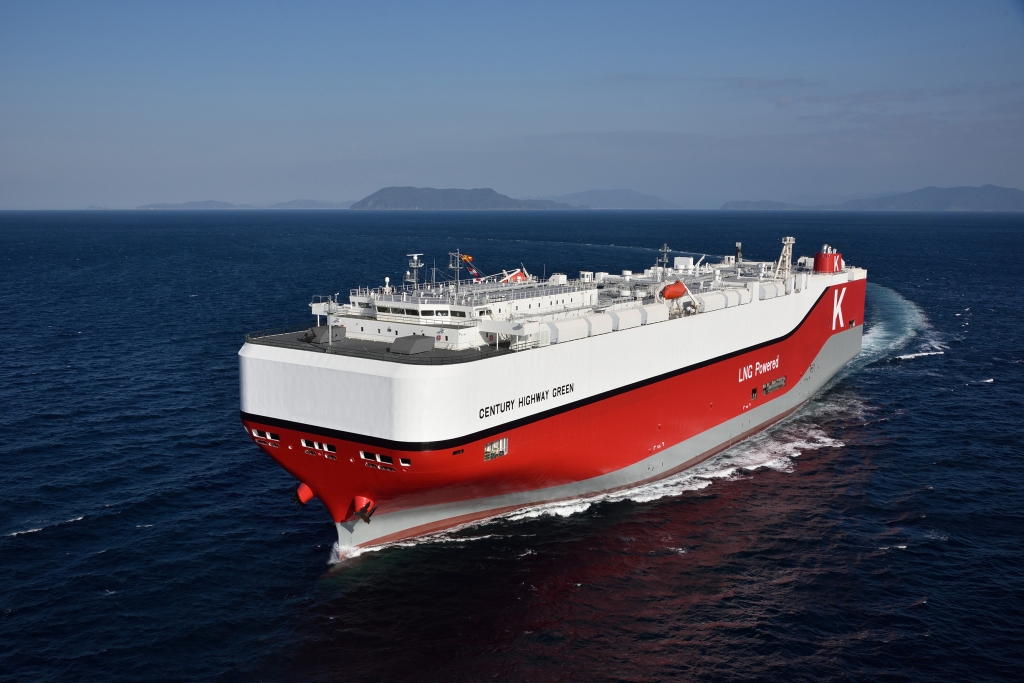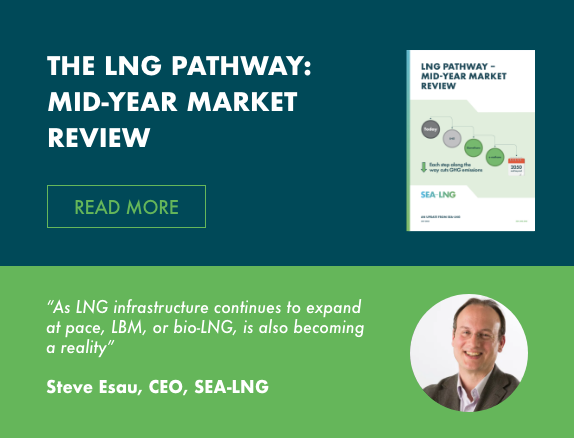25th May 2021
Applauding the Shipping Industry’s Move to Cleaner Air and Lower Greenhouse Gas Emissions

It is time to celebrate the recent LNG-fuelled new build vessel announcements from many major shipping industry leaders. Their decisions serve to again emphasize that the industry is moving forward environmentally and doing what is right.
Shipping, and in fact, the global environment cannot afford to wait for future solutions that may or not be safe, affordable, and scalable. To suggest that moving to LNG today and gaining the well-known air quality benefits and proven greenhouse gas (GHG) reductions now blocks future emissions reductions is at best ill advised. At worst, it is dangerous. Delaying only exacerbates the current situation. We must continue to act now.
For many years LNG has been the only scalable, operationally proven, and commercially competitive fuel that provides immediate air quality and GHG benefits. It offers ship owners the lowest-risk solution to provide air quality improvements while incrementally reducing the GHG emissions from their fleet’s operations. Further GHG emission reduction benefits are already being achieved by blending in bio-LNG. In the future, synthetic LNG produced from the same feedstock as other synthetic fuels, can provide comparable GHG savings on a full life-cycle basis. This combination will future-proof today’s investments.
To state today what future fuels will be safe, scalable, and competitive ten or twenty years from now is just not possible. Those that suggest they know and have theoretical models that allegedly prove their claims are just not being realistic. Forward-thinking and environmentally conscious ship owners, however, are recognizing that the investments they make today in LNG Dual Fuel (DF) vessels, (engines capable of using more than one fuel, such as LNG and MGO), and bunkering infrastructure mitigate the risks they may face tomorrow. Perhaps most importantly, these owners understand there is no reason to wait; a silver bullet solution does not exist and may not exist in the future. Let us not forget that it took almost 50 years of testing and technology together with operational experience to bring LNG to where it is today as a scalable and sustainable maritime fuel.
Waiting for the perfect solution is a higher-risk approach that only adds to the GHG challenge. Waiting simply delays the air quality and GHG emission savings possible today, in favour of unproven future fuels with significant technical, safety, operational and cost/investment challenges. Will they prove themselves? We simply do not yet know. Even if they do, the most optimistic forecasts show it will be at least a decade or more before they can be proven safe, competitive, scalable, and commercially viable. There is currently no alternative to LNG for deep-sea vessels in the foreseeable future.
Ignoring LNG’s real GHG reductions from well-to-wake, rehashing the tired arguments surrounding methane slip and not acknowledging the significant work the engine manufacturers have done to reduce it, is misleading. They only serve as excuses for some to delay, missing the opportunity to contribute to cleaner air and carbon reduction now.
The early movers in Norway and companies like Tote in the US, among others, have demonstrated the operational, environmental, and commercial potential of LNG as a marine fuel. The broader shipping market’s observation of their success is reflected in subsequent newbuild order decisions. LNG-fuelled vessels (excluding LNG carriers) now account for about 18.5% of the 2021 new build order book according to DNV.
Accounting for 25% of newbuild capacity in the large cruise vessel market, LNG is now penetrating new sectors. Charters placed by the likes of BHP, Rio Tinto and Anglo American demonstrate this in the bulk shipping sector. The energy sector with Shell and Total has also been well represented. Recently delivered and currents orders for LNG DF Pure Car and Truck Carrier (PCTC) vessels by UECC, NYK, K-line, Siem, and other companies who are expected to follow, will substantially decarbonize the movement of cars and heavy equipment. CMA CGM’s strategic move to include LNG DF systems in their largest newbuild orders, including their Ultra Large Container Vessels (ULCVs), provides container shipping and its diversified customer base with accelerated decarbonization. Hapag Lloyd’s choice to include LNG DF vessels in its latest newbuild program and MSC’s recent announcements on their LNG DF intentions show that many of the largest container shipping organizations understand the potential, both in terms of GHG reductions and commercial viability. They are not waiting, they have chosen to act.
These companies should be applauded for their decision to begin decarbonizing their vessel operations today and providing cleaner air in the world’s precious port communities. They deserve to be celebrated and supported by their customers and other stakeholders as they embark on this important journey.
Waiting is not an option. The climate cannot afford it. We need to act.



